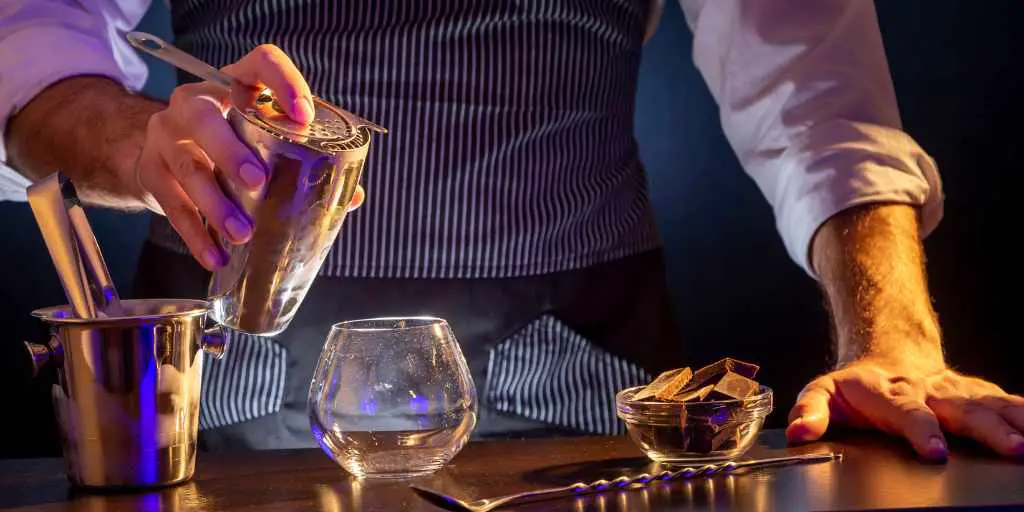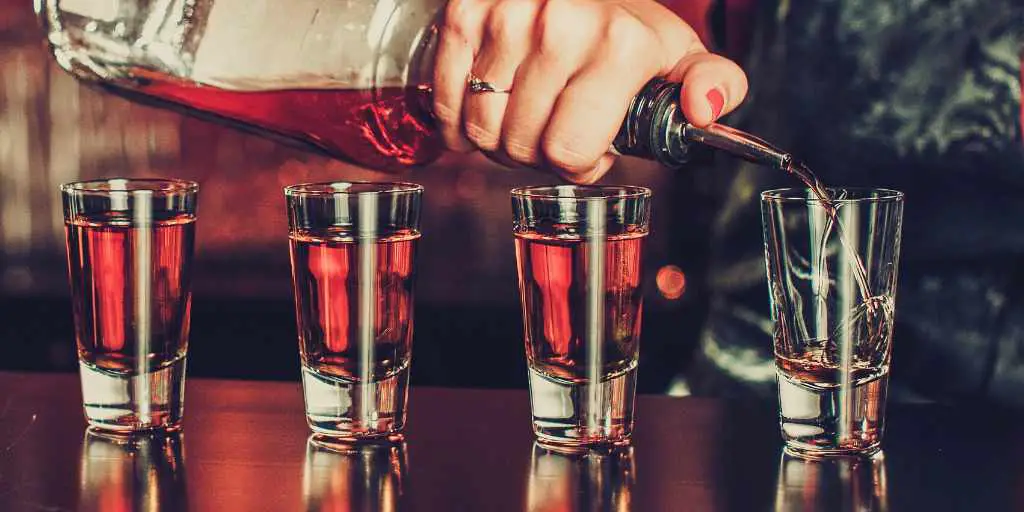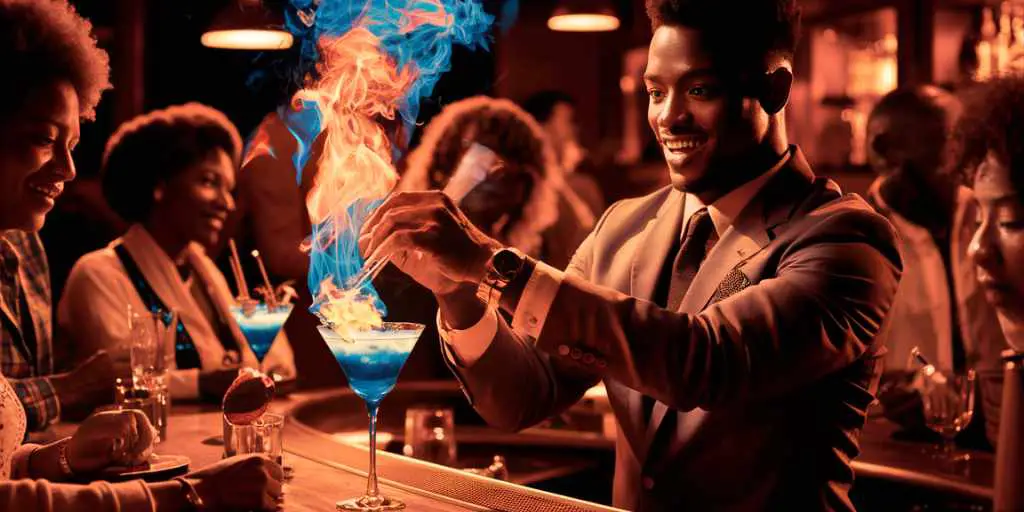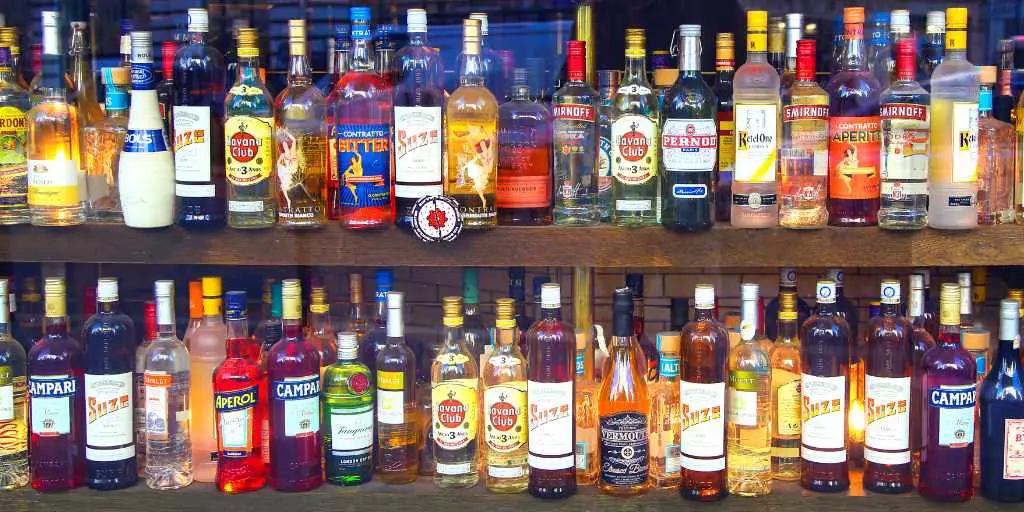Bartending is a profession that requires mastering a wide range of skills, and among them is the ability to memorize a seemingly endless list of drink recipes. It’s not uncommon for bartenders to store hundreds of cocktail recipes in their memory, allowing them to mix drinks efficiently and accurately to satisfy customers’ varied tastes. Memorizing such a vast number of recipes can be a daunting task, but successful bartenders employ a combination of memory techniques, training, and practice to build and maintain their repertoire.
Each bartender might use different strategies for committing drink recipes to memory, but some fundamentals apply across the board. Repetition, mnemonics, and categorization are common techniques that help bartenders learn and remember various drink combinations. Additionally, formal training and education programs and hands-on experience play significant roles in the learning process. As bartenders hone their skills, they develop multitasking abilities and utilize tools and aids to keep their knowledge sharp and readily accessible.
Key Takeaways
- Bartenders memorize drink recipes using memory techniques, training, and practice.
- Hands-on experience and formal education programs contribute to their skill development.
- Multitasking abilities and tools help bartenders manage their extensive knowledge.
Fundamentals of Drink Memorization
Categorizing Cocktails
To memorize an extensive list of cocktails, bartenders often categorize them based on similarities and differences. By grouping cocktails into categories such as sour cocktails, spirit-forward cocktails, and spice-driven cocktails, bartenders can more easily recall the relevant recipes when needed.
Some common categories include:
- Sours (e.g., Whiskey Sour, Daiquiri, Margarita)
- Highballs (e.g., Gin & Tonic, Scotch & Soda)
- Stirred & Boozy (e.g., Martini, Manhattan, Negroni)
- Tiki (e.g., Mai Tai, Zombie, Pina Colada)
Understanding Common Ingredients
It is crucial for bartenders to be familiar with common ingredients found in various cocktails. By understanding the taste profiles and functions of these ingredients, bartenders can quickly recall the components of a specific drink. For example, knowing that citrus and lemon juice is a common souring agent in cocktails will help a bartender memorize that a Margarita needs lime juice.
Some essential ingredients to know include:
- Base spirits (e.g., vodka, gin, rum, whiskey)
- Liqueurs (e.g., triple sec, vermouth, Campari)
- Sweeteners (e.g., simple syrup, agave, honey)
- Mixers (e.g., tonic water, soda, juice)
- Bitters (e.g., Angostura, orange, Peychaud’s)
- Fresh ingredients (e.g., fruits, herbs)
Know the Most Popular Cocktails
Another key aspect of drink memorization is knowing the most popular cocktails. Bartenders should familiarize themselves with the classic cocktails frequently ordered at bars. By focusing first on the most popular cocktails at cocktail bars, including Martinis, Old Fashioneds, and Mojitos, bartenders can hone their memorization skills more effectively and cater to customer preferences.
Here’s a brief list of some popular cocktails:
- Old Fashioned
- Margarita
- Cosmopolitan
- Mojito
- Martini
- Mai Tai
As bartenders continue to learn and grow, expanding their knowledge and memorization skills becomes increasingly important. Categorizing cocktails, understanding common ingredients, and knowing the most popular cocktails provide essential foundations for effective drink memorization and successful bartending.
Memory Techniques for Bartenders
The Role of Repetition
Repetition is a crucial element in helping bartenders memorize a vast number of cocktail recipes. By repeating the process of making different drinks multiple times, bartenders enhance their muscle memory, helping them automatically recall the necessary ingredients and steps when preparing a cocktail. Many bartenders practice making their most frequently ordered drinks daily to solidify their memory of the recipes. The Daily Beast describes how bartenders remember hundreds of cocktail recipes through continuous repetition.
Association Methods
Another technique bartenders use to memorize drink recipes is association. Associating cocktails with stories, imagery, or mnemonic devices can help you remember the ingredients and ratios involved. For example, bartenders may recall a drink’s ingredients by visualizing the first letter of each element, forming memorable acronyms or words. In a discussion about memorizing cocktail recipes on Reddit, bartenders share their favourite mnemonic devices and association methods to help them remember numerous drink recipes.
Visualization Techniques
Visualization is an effective method for bartenders to remember cocktails, too. Visualizing the ingredients and their proportions when pouring drinks enhances mental recall. For instance, visualizing a margarita as a green glass filled with a sour mix of tequila and lime juice or picturing a mojito as a tall glass with muddled mint leaves and white rum can help bartenders easily identify the drinks. The Crafty Bartending blog emphasizes the importance of visualization in learning cocktail recipes.
By combining repetition, association methods, and visualization techniques, bartenders can memorize various cocktail recipes effectively and deliver outstanding customer service.
Training and Education
Formal Bartending Courses
Many aspiring bartenders choose to attend formal bartending courses to develop their skills. These courses often cover topics such as drink recipes, techniques for mixing, pouring, and garnishing cocktails, as well as knowledge on alcohol laws and regulations. Upon completion, students may receive a bartending certification, which can enhance their credibility and employability.
On-the-Job Training
Another popular method for learning the art of bartending is through on-the-job training. Many establishments provide initial training lasting 2 to 4 weeks, allowing new bartenders to learn the basics and shadow experienced colleagues. This hands-on training is invaluable, as it provides firsthand experience in handling real-life situations in a fast-paced environment.
- Setup the glassware
- Gather the necessary ingredients
- Accurately measure and pour the alcohol
Additionally, some more experienced bartenders on platforms like Reddit suggest practising the process of making drinks while it’s slow, going through all the motions without pouring anything out. This repetition can aid in memorization and improve speed and accuracy.
Self-Learning Resources
Lastly, many bartenders turn to self-learning resources to enhance their skills and grow their collection of memorized drinks. Flashcards—physical or digital—are a common method bartenders use to study drink recipes in their spare time. They may also explore books, apps, online tutorials, and video demonstrations to stay up-to-date with industry trends.
Some popular techniques for memorizing drinks include:
- Associating ingredients with a specific glass/type of cocktail
- Grouping similar drinks to highlight shared components
- Recalling the “story” behind a cocktail, especially its origin and namesake
By combining various training and education methods, bartenders can master the art of memorizing numerous drink recipes and hone their skills to excel in the industry.
Practice and Experience
Crafting Signature Drinks
Bartenders often gain experience and memorize numerous drinks by focusing on crafting their own signature drinks. This process helps bartenders learn essential mixing techniques as they experiment with different ingredients and ratios. Furthermore, creating their unique drinks gives them a solid foundation in understanding cocktail recipes’ structures, helping them remember other drinks more quickly as they come across them.
- Experimentation: Trying out new combinations of flavours, spirits, and mixers.
- Knowledge of Ingredients: Understanding the taste profiles and interactions between various ingredients.
- Confidence: Mastering their craft and ingraining the skills necessary for quick and efficient drink preparation.
Customer Interaction and Feedback
Interacting with customers and receiving their feedback is another crucial aspect of a bartender’s learning process. Reddit users share that strong customer relationships help bartenders gather insights into the most popular drinks and adjust their expertise accordingly. Engaging with patrons in this manner contributes to the bartender-imbiber relationship, fostering trust and open exchange of ideas.
- Customer Preferences: Learn what specific customers like and expect, leading to an improvement in understanding different drink variations.
- Trending Drinks: Stay updated on current drink trends and popular requests, allowing bartenders to focus on relevant recipes.
- Repetition: Repeatedly making customer-requested drinks reinforces a bartender’s memory, ensuring the recipes become second nature.
Technique Benefit Customer Feedback Helps bartenders understand which new drinks are popular Drink Requests Frequent practice on popular drinks reinforces memory Customization Adapting drinks to customer preferences enhances the bartender’s understanding of ingredients
By combining practice in crafting signature drinks and regular interaction with customers, bartenders develop the skills and expertise necessary to memorize a vast range of drinks. As they become more confident and knowledgeable, bartenders retain recipes and techniques, allowing them to succeed and excel in the competitive bartending industry.
Tools and Aids
Cheat Sheets and Apps
Bartenders often use cheat sheets and mobile apps as quick references to help them memorize and recall drink recipes effectively. These aids provide easy access to important information, such as ingredients, proportions, and mixing techniques. Various bartending apps offer extensive cocktail recipe libraries, customization options, and interactive features like timers for precise mixing. One example of a popular bartending app is Crafty Bartending.
Recipe Books and Flashcards
Bartenders also rely on recipe books to learn and master different cocktails. Recipe books provide detailed instructions, illustrations, and historical context for each drink, which can further enrich a bartender’s understanding and memorization of the recipes. Flashcards offer a more portable and personalized learning method, as bartenders can create their cards with specific recipes they need to focus on. In a Daily Beast article, a bartender shared his success in using flashcards to memorize many cocktail recipes.
Here are some popular methods to format recipe books and flashcards:
- Tables: Arrange the recipe information in columns for ingredients, measurements, and techniques.
- Bulleted and numbered lists: List the ingredients and use numbers to show the steps in the mixing process.
- Bold and italic text: Emphasize important terms or ingredient names for quick recognition.
Whether using cheat sheets, apps, recipe books, or flashcards, bartenders have a range of effective tools and aids to help them memorize and perfect their cocktail-making skills.
The Art of Multitasking
Bartenders face a challenge when memorizing numerous drink recipes while managing multiple orders simultaneously. Multitasking is an essential skill in the bartending industry that requires practice and dedication. There are various methods bartenders employ to become proficient multitaskers.
One common technique practised by aspiring bartenders is using flashcards to memorize cocktail recipes. This approach allows them to study the recipes in-depth and have their peers quiz them on various mixtures. Additionally, focusing on the basic well or house liquor combinations helps bartenders familiarize themselves with all the recipes and essential drink recipes they will encounter regularly.
Another useful strategy is organizing the bar setup efficiently, ensuring all the necessary tools and ingredients are within reach. This organization allows bartenders to be as quick and efficient as possible, resulting in minimal downtime between orders and more drinks served per hour.
Bartenders also develop their multitasking skills through practice and repetition. By working in fast-paced environments, they naturally learn how to make several drinks quickly and efficiently simultaneously. Moreover, mnemonic devices like acronyms or memory palaces can enable bartenders to recall recipes more easily.
Here are some essential multitasking tips for bartenders:
- Prioritize orders: Assess the situation and prepare complex cocktails first, followed by simple, easy-to-make drinks.
- Group similar tasks: Make multiple drinks with similar techniques or ingredients at once, saving time and effort.
- Practice efficient pouring techniques: Utilize both hands and jiggers, ensuring accurate and speedy execution.
- Stay calm and composed: Maintain a professional demeanour despite the pressures of a busy bar environment.
In conclusion, mastering the art of multitasking is vital for bartenders to excel in their profession. By employing various memorization techniques, organizing their workspace efficiently, and constantly seeking opportunities to practice, bartenders can develop their multitasking abilities and create a seamless and enjoyable experience for their patrons.
Keeping Skills Sharp
Continual Learning
Bartenders take time to master their craft through continuous learning. One effective method is to research and practice, using resources like books (e.g., Jeffrey Morgenthaler’s “The Bar Book: Elements of Cocktail Technique”) and bartending videos on YouTube. Another approach is to take a bartending course, which can provide a structured environment for learning the intricacies of serving customers alcohol from behind a bar.
In addition to formal education, bartenders often develop mnemonic devices and mental associations to help remember cocktail recipes. For example, some may associate a Margarita with a beach vacation or group similar cocktails by their base spirit.
Staying Updated with Trends
With the ever-evolving world of mixology, bartenders must stay updated on the latest trends. This involves experimenting and mixing drinks with new ingredients, such as house-made tinctures or obscure bitters, and adapting to changes in customer preferences. Following industry news and participating in online communities can help you stay informed about the latest cocktail recipes and techniques.
Here are some ways to stay current with trends:
- Read industry publications: Keep up with the latest news and know-how from the bartending world.
- Follow mixology experts on social media: Stay informed about new techniques, recipes, and trends from well-known bartenders and mixologists.
- Attend seminars and workshops: Join events and conferences to network with fellow professionals and learn from industry leaders.
- Participate in competitions: Enter mixology contests to showcase your skills and learn from the creations of other talented bartenders.
By dedicating time to continual learning and staying updated with trends, bartenders can ensure they are always ready to delight their customers with both classic and innovative drinks.
Frequently Asked Questions

What are the top cocktails every bartender is expected to know?
Most professional bartenders are expected to know popular and classic cocktails. Some examples of common drinks include the Whisky Sour, Martini, Old Fashioned, Mimosa, Moscow Mule, Cosmopolitan, and Bloody Mary. These drinks are considered basic foundations, and bartenders must be familiar with them.
Are there specific techniques bartenders use to learn and recall numerous drink recipes?
Bartenders employ various techniques to memorize drinks and recall drink recipes. One popular method is using flashcards, which can help bartenders study and test their knowledge regularly. Additionally, practising and repetition are essential to retain and recall information.
How extensive is the drink repertoire that a professional bartender possesses?
A professional bartender’s repertoire depends on experience and dedication to the craft. An experienced bartender should know at least 60 to 80 drink recipe sources. This number, however, can vary depending on the bar or establishment and the bartender’s expertise and willingness to learn additional recipes.
What strategies do bartenders employ to memorize new cocktail recipes quickly?
To quickly memorize new recipes, bartenders might use mnemonic devices or even create mental associations to remember ingredients and proportions. Some bartenders also rely on consistently making new cocktails, which helps reinforce the memorization of new recipes and processes.
How long does it typically take for a bartender to master mixing a wide range of drinks?
The time it takes for a bartender to master mixing various drinks varies based on experience, natural aptitude, and commitment to learning. With consistent practice and dedication, a new bartender can gain a solid foundation in a few months, but becoming an expert in the field usually takes years of experience and continued skill development.
Do bartenders typically create their own signature drinks in addition to established classics?
While bartenders are expected to know how to make and prepare classic cocktails, many also enjoy creating their own signature drinks. This allows bartenders to showcase their creativity and innovation and provide a unique experience for their clientele. Developing a signature drink can be essential to a bartender’s career and personal brand, contributing to their overall success in the industry.




